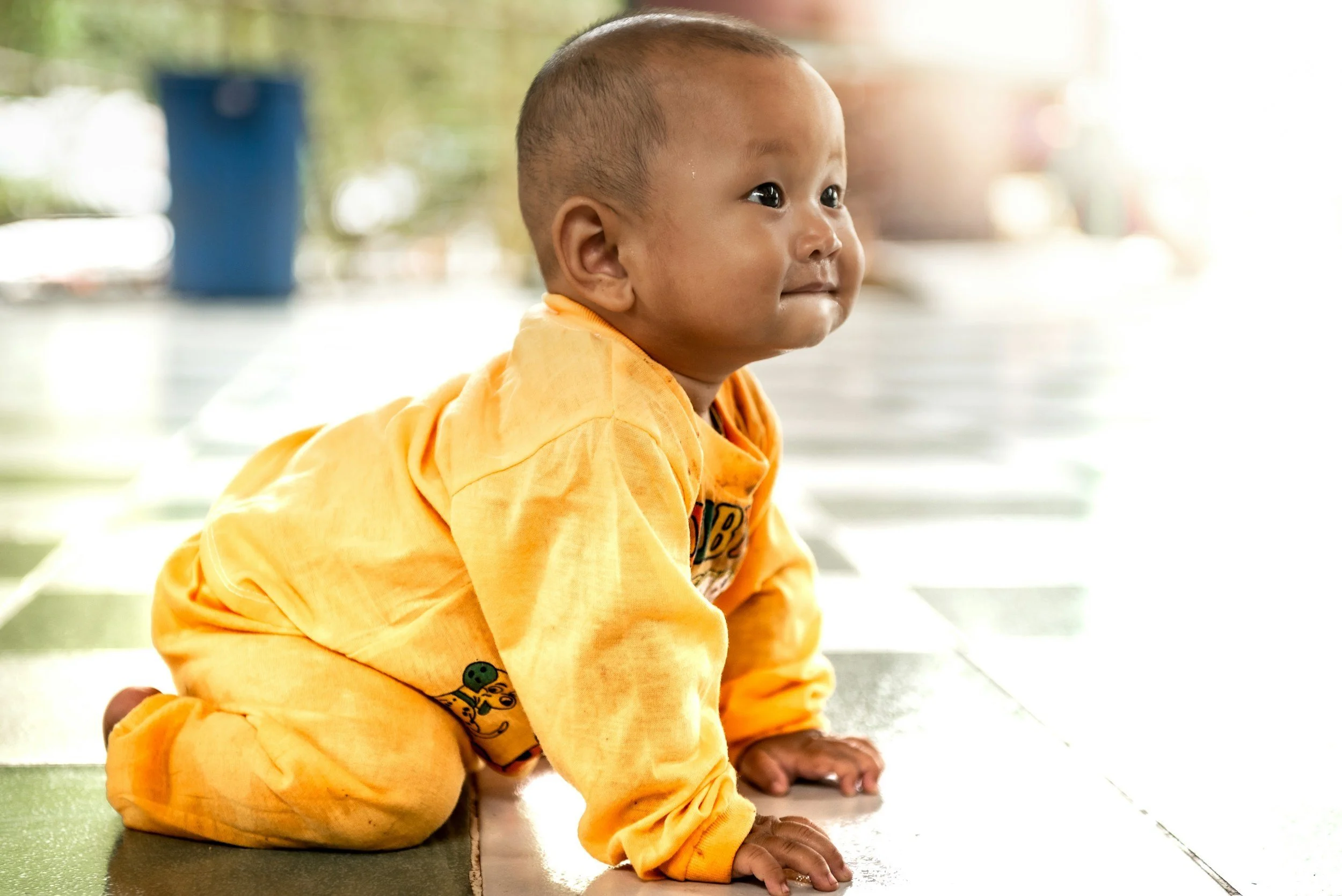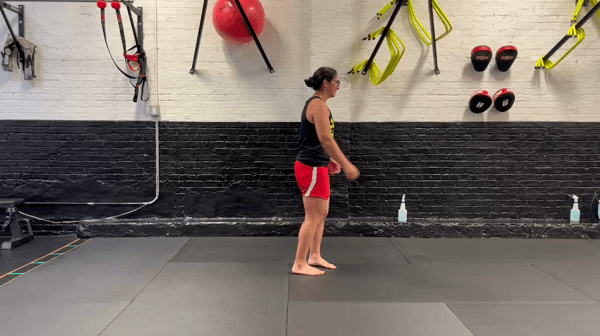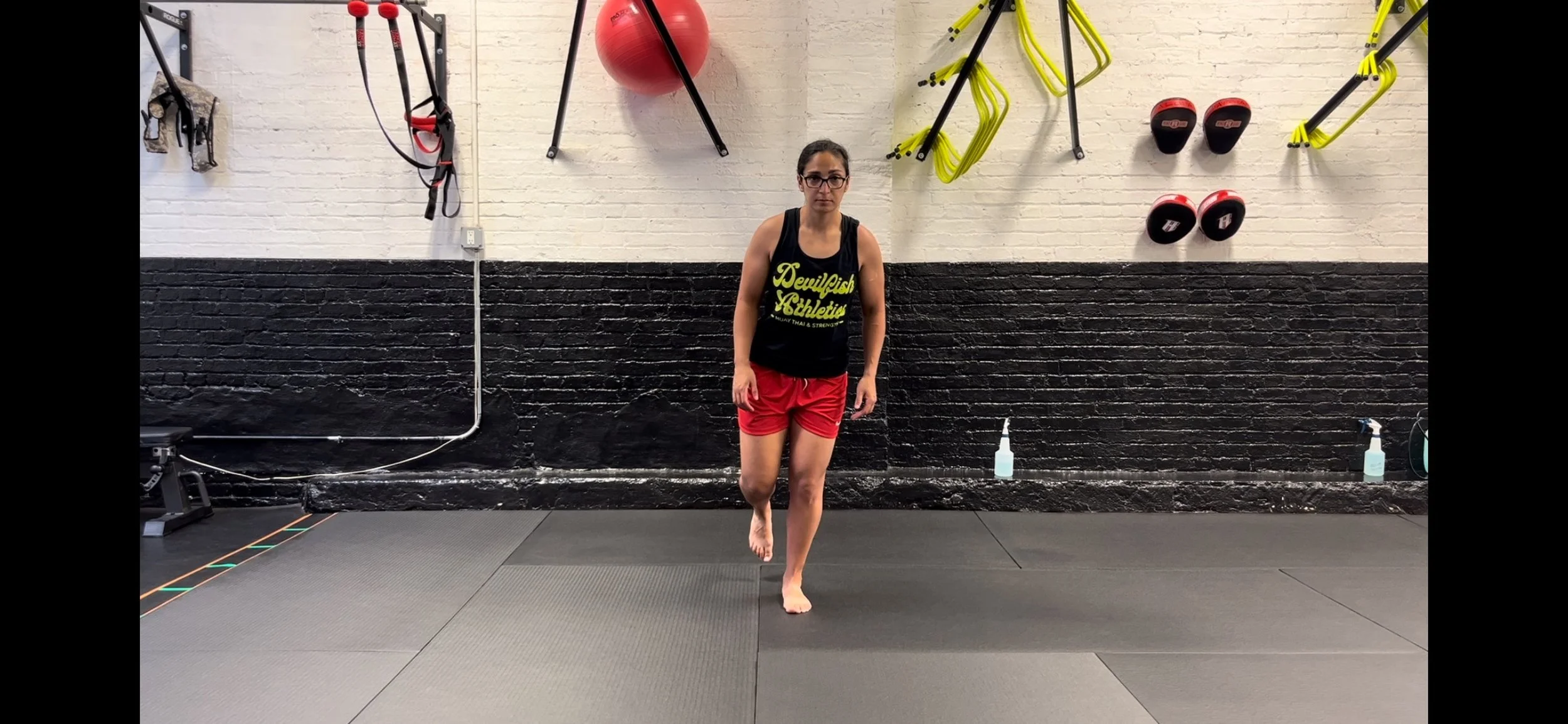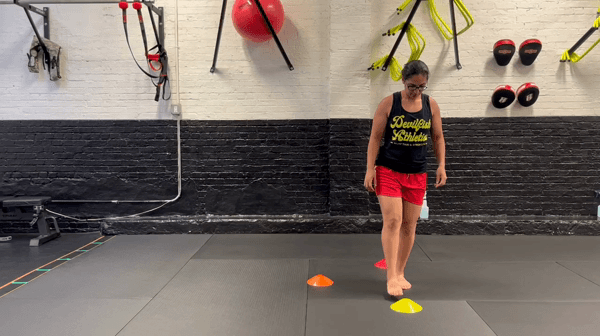Balancing act
How to improve your balance and why it matters.
Balance is your body’s ability to control your weight distribution to prevent you from falling. The coordination of your central nervous system, inner ear, eyes, muscles, bones, and joints is what allows you to stand and move without losing your balance. When you step off the curb and lose your footing for a second, all of these systems align to give your brain and body information to course-correct and prevent you from rolling your ankle or falling altogether. However, you need to train these systems to respond quickly enough to work.
So, what can we do to improve our balance? You need to be able to control your body in space (e.g., learning to balance whether we’re moving or standing still) and absorb force when you land (e.g., landing with control when we jump or lose our balance). But how can we improve these two skills? We can focus on our coordination and stability.
First, we’ll start with a quick assessment:
Try balancing on one foot while (slowly) counting to ten. If you’re unable to do this after a few tries, continue working on this before attempting any of the other exercises listed below.
Note: Before moving on to different exercises and skills you can practice, remember that you should only attempt these exercises if you’re cleared by a doctor to do so. If you’re unsure, please consult your physician first.
Coordination
Coordination is when your muscle fibers and neurological systems fire with the appropriate timing, allowing you to complete the task at hand. Coordinated movement looks graceful, smooth, and efficient (instead of choppy and awkward). Imagine a gymnast propelling themselves through the air. They seem to exert minimal effort to complete this unbelievable physical feat, yet we know it’s not that simple. Practicing these skills countless times improves their coordination, making these movements easier and faster for their brains and bodies to execute.
How can we improve coordination? One of the first movements I use with students to practice this skill is crawling. Believe it or not, crawling (on all fours) is one of the best ways to practice coordination and stability, which will improve your balance. While this is done from an all-fours position, we can also practice a standing variation of this movement.
Image: baby crawling
The main focus of the crawl is to practice a basic gait pattern, moving your opposite hand and foot together. When we walk, we do this naturally with each stride. If you’re not sure what this would look like, try taking a few steps where you move your left arm and left leg simultaneously. You’ll quickly see that this feels unnatural and awkward. Try the same thing while crawling. You’ll see that this is actually quite difficult to do!
Once you get the hang of the coordination and can comfortably bear weight in your hands, you can make this more challenging by raising your knees about one inch off the ground.
The standing crawl is actually marching in place while swinging your opposite arm overhead. It’s a great option if you’re unable to get to the floor or would prefer to stay standing. If you’re a fan of this variation, you can explore this further in Dr. Leonard Schwartz’s Heavy Hands workout routine.
Yes, I know this looks and feels ridiculous, but it actually feels pretty good and is a great way to get your heart rate up. If you're worried about how it looks, try it when no one is home before you take it to the streets!
Stability
Stability is our ability to maintain a desired position or movement. This can refer to a static position, like balancing on one foot without falling, or to a dynamic position, like running to catch a ball and being able to control your foot, ankle, knee, hip, and torso in space while executing this movement.
How can we improve our stability? Balancing on one foot, or what we call a single-leg stand, is the first exercise to work on. Once you can stand on one leg for 30 seconds or so, you can challenge this even more by closing your eyes or looking up and down without moving your head (only moving your eyes). Can you see how much work your eyes do to help you stabilize?
Single leg stand in action (not much action to see here)
Next, we’ll practice something called a single-leg cone tap. Set up three cones (or any objects) on the floor, about two feet apart. The further the cones are from your feet, the more challenging this will be. Balance on one foot and reach toward the cone with your other foot. Try to keep your toes relaxed as you reach for all three cones. As you get more comfortable with this, you can move the cones further away from your foot to require a longer reach.
You can place any three objects on the floor as targets. The further they are from your base foot, the more challenging this will be.
Once you’ve improved your ankle and foot stability, you can eventually progress to things like hopping and bouncing. Keep an eye out for a future post on the benefits of jumping rope, which is one of my favorite ways to practice coordination and absorbing force when bouncing.
p.s. If you’re standing and reading this on your phone or computer right now, feel free to try the 10-second balancing challenge. How long can you balance for?







